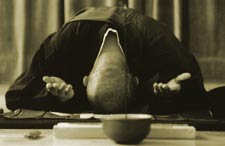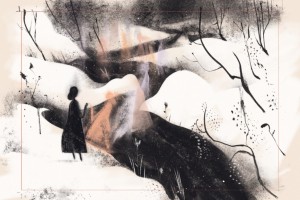(whistler wanderlust transcript)
There’s something about having mountains to you on all sides, a presence their enormity affords. You sense that they’ve been here long before you, will be long after, and in that knowing, your troubles seem laughably small. But it’s not just that. As immutable as they appear, they change, erode, splinter into hard avalanches, become riven with crisscrossing streams, and you recognize that same process is at work on you too, and it gives you comfort to be in such grand company. Even these are being worked on, ground down smaller and smaller into sand, fitted, placed perfectly, like you, like me.
This is not a piece about mountains, though. This is about that thing that pushes them out of the ground, then grinds them back down. In that way, it is the same as any other speech, or conversation, or glance, cause there’s only one thing to talk about. You can call it love, or god, or nature, but union with it is what our hearts seek, to dissolve into it for good.
I believe that deep service is something you can disappear into, but only if you get it right, only if you learn how to help others without hurting yourself. For the next minutes, I’ll tell you about the mistakes I’ve made, how I’ve hurt myself, the times I’ve got it right. I don’t want to ruin the talk by saying I don’t have it all figured out, not yet, but i think I’ve found the right question.
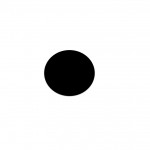
Another James, William James once asked us to take the simplest object of attention, a dot on the wall, and attend to it as long as we can. He said, in that activity, one of two things will invariably happen. You will find the object growing indistinct or blurred, or your mind will turn to other things. However, if you ask yourself successive questions about the dot, it’s colour, how big it is, it’s location, you can hold your attention on it for a comparatively long time. This is what genius does, in whose hands an object of attention coruscates and grows.
So let’s be geniuses about this. About how to help others without hurting ourselves. Keep on asking that question Stay aware. This is some risky territory, and some you should know intimately. The stakes are high working with the wounded, not just for them, but for you. You face their same risk. You can hurt yourself. In fact, you will.
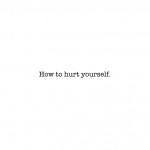
In 2007, I returned from Sudan, my hopes high that i had participated meaningfully in the emancipation of the brave people starving and fighting in its wide desert, then watched it slip back into a wider war. The hospital where I worked was abandoned from the fighting, the town burned down. Months later, around Christmas, I was sitting with friends, in a restaurant near my house. It was snowing, and I was warm. Someone was laughing, making a joke. I found myself laughing too, and then…..this clear, sweet feeling. It was so unfamiliar, I couldn’t place it. What was it? Oh yeah. Joy.
Like joy, suffering is a shared experience. You do an fMRI of a person’s brain who watches someone experience pain in their hand, and the brain of the observer lights up as if it was their own. It’s real. In the act of helping those in pain, if you don’t find a way to transform that, it wobbles you from your centre, and you wonder why you feel uneasy when everything appears just right. The loss of one’s centre, the erosion of solid ground, is a constant attrition, even more urgent when you’re working with those who are in trouble.
People who want to jump right in, helping others before they know how to help themselves. Our culture is geared to the heroic act. Go go go. There is little attention given to self-care, and it’s even worse in the caring professions. I never learned about it in medical school. What I learned was that doctors have a high incidence of burnout, a high prevalence of alcoholism and depression, even suicide. There was no talk of prevention, of connecting on a deeper level to what we were part of, that medicine was an activity life developed to put itself back together and if we didn’t make our ongoing self-repair a priority, we would fall quickly into the category of the wounded.
I remember reading the security document before I went to work in a Somali refugee camp. It talked about what to do if I was kidnapped for many months and recommended daily meditation, healthy meals, and regular exercise. It was the first time, in all my years, that I remember reading anything about being healthy in the field. Don’t get me wrong. There was plenty of information about how to roll once you were hurt. This is how you know you know you’re depressed, this is how you know if you’re an alcoholic. Have you ever tried to cut down, have you become angry when someone has asked you to do, has your drinking ever caused you to do things for which you felt guilty, have you ever had an eye opener first thing in the morning. For this, there were checklists, counsellors, support groups. There was none of this rigour to help you stay well.
I never once heard the word “meditation” in medical school, and though I was told to give patients advice about how to be healthy, nothing was said about how important it was for ME to exercise or eat well. How can doctors be an exemplar of health if we aren’t healthy? How could we know what healing looked like if we’ve never been whole? How could we help others and hurt ourselves?
Let’s talk about how we hurt ourselves. Let me count the ways. I work in an ER, so if i’m an expert on anything, it’s how people hurt themselves. I’m not just talking about those who crash off their bike trying to pop a wasted wheelie, but the people who come in to my ER with less obvious, but deeper injuries. Alcoholics who sleep on street grates, drinking listerine until they taste oblivion, the young man whose inner life is so painful he cuts his own arm to distract himself from it, the woman whose panic attacks make her want to jump from a window, and endures a sedative haze to keep them at bay. People who are abused. People who abuse.
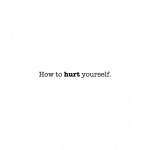
Let me be clear about “hurt”. By “hurt” I mean to experience an injury that makes you feel uneasy, or if we wish to explore more deeply a biological metaphor, dis-ease, what happens when we get pushed away from our homeostatic centre, that sweet spot where we thrive. Sometimes we get pushed way out, sometimes so far out, we never get back. That’s how we die, you know. Physically, and spiritually. There is a hovering around a middle that all of these billion cells serve, the billions more bacteria on it that you can’t see. We are constantly tugged away from it, by injury, illness, time. Whenever we are moved away, we must spend extra energy recovering back towards it, or get helped by someone else. This is how medicine works, by tipping the balance back.
In the body, one of our homeostatic homes is 37.3 degree celsius. This is our core temperature. Inuit, Sudanese alike, not higher, not lower. Too low, we spend energy shivering, too high, sweating, seeking shade. If it goes too high, say 41 C, our body starts to fail. The proteins denature, unfurl. What gathers us around our centre, starts to come apart. Too much time away from it, and our essence leaks out completely.
There is a sweet spot for our mind and, if you forgive me such an ineffable word, our spirit. Of course there is. Same process. If we are moved from the centre, we start to bleed energy, and get sick. We toss and turn in bed, get angry at people we love, use alcohol and drugs as some type of band-aid for a wound that won’t heal, do acts of self harm to distract us from the pain we are holding on to. We drive people we love away, the same people who help give us balance. The sickness worsens.
Hope turns to resignation, sweetness to bitterness, and our days seem like something we must survive instead of celebrate. Like it is with a limping leg, we no longer navigate it with ease, the bandwidth of our consciousness dominated by torment. We forget that we are in service to something much deeper, more abiding: that which moves mountains. We hurt ourselves when we lose contact with what sustains us.
I know hurt. Not just from the patients that queue in my ER waiting room, but my own. Deep hurt, almost irrecoverable. Almost didn’t make it past that push. There were lonely, dark years, and in them, I was lost and confused. You see, I thought that the hurt was mine to own, that I had to hold onto it, like a hot coal, punishing myself. It was only later I learned that the best way to trend back to centre is to learn a practice of letting go, of deep surrender, to trust that there is a part of you that wants you to be well, that will even do the work if you let it.
I’ve seen many colleagues hurt themselves. In a refugee camp where I worked, a nurse slowly become an alcoholic. After a couple of months, his eyes were glassy by noon. He didn’t last. Other people descended into bitterness, unable to transform the heavy burden of suffering they were witness to. Resignation followed, ate away at their motivation, creeped into their relationships as some sort of blame. Some of them returned home to find it didn’t fit them so well, so they struck out on the road again, hoping that on it they would find an ease they could not find in themselves. Others gave up on the movement altogether, believing that such intense work can only be done in small and infrequent doses. It’s not. In fact, should you be able to work with what comes up, with time, you don’t become more jaded, but more effective.
The stakes are high, with helping others. Not just in refugee camps, not just for those of you purport to help others as your profession, as healers or teachers or spiritual guides, but for every single person. There is no activity that you do that is not in deep service to our shared humanity, our shared world, mountains included. Every little thing counts. In Buddhism it is called Pratītyasamutpāda, co-arising, emergence, interdependence of all things. Indra’s net, every single thing woven together, moving jewels, one is pulled down and the descent is shared. You can’t hurt yourself and help other people. Things are too tightly bound for that. You must help yourself to help other people. Not to the last piece of pie, but on a deeper level. Hurting yourself to help others makes as much sense as purporting to help them and robbing them blind. Lift yourself, and the rest will follow. Get it right so you know the sweet taste of what real help is, so you are moved to do it from that centre place of infinite resources.
Sometimes, people are drawn to working with those who are in need of help because they think that on the path to redemption, they will be redeemed. Or they like the optics, or the hierarchy it affords, their position of relative authority salving temporarily, their own wounds, allowing them to put off the grit of their own work. I would argue, there is no other work. Help yourself.
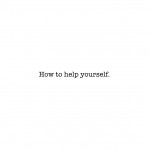
So how do you do that, help yourself? If I’m right about hurt, if it is a trend away from our homeostatic home, a centre for our mind ands spirit that is the equivalent of 37.3 degrees Celcius, a blood pH of 7.40, a potassium of 4.0 meq/l, then how do you know where it is? What tests can you do?
One way to findcentre is to know where it’s not. If perfect enlightenment is a sense of happiness independent of circumstances, as at peace to be dragging in your last breaths on a ventilator as you are lying on a beach, hat over your face, then it’s opposite would be a perfect confusion, a sense that nothing is right, not you, not how you are spending your days, nor your evenings. The symptoms are a friction in your feelings, a sense of discomfort that you are carrying around everywhere, a heaviness in your heart, a tightness in your throat, around your eyes, even in circumstances that made you happy. The signs are you toss and turn in bed, never feel rested, get angry at those you love because they aren’t helping you, blind that in this one, you must help yourself.
How do you find that place again, when you forgotten even where to look? Or even that it’s something that can be found? Well, that’s where helping yourself starts.
With faith.
Faith that you, like anyone else, deserve to be free. In fact, are bound for freedom, if you surrender to grace. That there is something inside you, the same thing that as soon as step into the hot sun, and place that hat over your face, opens microscopic holes on your body so that the water you’re made of, that same water in those crisscrossing streams that moves smoothly through the clouds, and through you, evaporates, cools you down to a place where you can thrive.
It does imply, of course, that you know when you’re thirsty, and drink when you are. This is one of the most important things i can tell you. There’s an active component to this, an agency, where you participate 50/50, create the fertile ground where the phenomenon can unfold. You do that, and then you trust. Like Issa says, that’s how the dew creates itself: trust, and trust, and trust.
What is the equivalent of cool water for our energetic centre? How do we stay close to that sweet spot, so we don’t get confused by the entropy that builds when we move from it, and come apart? There are many answers to this question. Rest. Exercise. Healthy eating. A deliberate cultivation of one’s own natural vitality, the prana that works in you. But that’s not enough. You can go to any yoga studio or gym and see people that pay attention to this, but despite their body’s fitness, aren’t at ease in it.
What you need is a practice. You needs to sit in direct, deliberate contact with your centre, and practice letting go, a surrender that does not imply defeat, but release into that power that moves mountains.
For me, practice means some type of meditation. Meditation in the sense of the word that is not proscriptive to how it’s done, the one that the Greeks share with the Christians and the Buddhists and the Muslims and the Hindus. It is most effective when done with the help of a skillful teacher, and in community. Calm, quiet reflection on your own essence, your true nature, done with regularity, daily, at first begrudgingly, with experience, more happily. Something that with time cultivates a sense that in times of crisis as in times of great blessing, you are in the middle of a vast space, and being held together perfectly. You practice first in stillness, then in action, then the space starts to be one of freedom, that follows you everywhere.
How do you know you need this? You just do. You need it every single day, like water, like air. Trust me, i’m a doctor. We’ve never needed it more than in our modern time, where moments of quiet reflection are priced almost completely out of the market. You’re not doing it just for you. You’re doing it for everyone, me included. We need you to be well so you can help. There’s so much work to do, so many people in the world, and things are changing fast. The greatest challenges are ahead of us. In fact…all of them. Climate change, disease, conflict over water. We need you to help us by helping yourself.
We don’t have time to talk about the practice itself in more in depth, the technique, the intensity, how to support yourself and others, in it. It’s something you can find. If you live in Toronto, you can join us for our weekly sits. However you get there, though, you need to know where your centre is, because you will be working with people who need you to show them. That is the deepest teaching: showing others what it’s like to be well.
How do you know it’s working? Your symptoms of unease fade, any conflict you had with yourself, or with others, dulls.
You meditate in stillness, then in action. I sit nearly every day in formal practice. On a cushion, half an hour, I do silent retreats once or twice per year. I’ve found a teacher. A deep teacher. I’ve a group of friends who value the same thing that I do, who support each other. My awareness grows, and as it does, my trust in it.
I made the most progress, when i started to practice in action. Throughout the day, I’ll meditate while I’m moving. Riding my bike, waiting in line. Even at work. It’s rare that the ER is quiet enough I can leave it unattended for more than a few minutes, so i’ll do it walking down the hallway to see a patient, a walking meditation that cultivates my awareness in the present moment, an aliveness to what my role is. I’ll bring my awareness to my footfalls, let what troubles I had outside the ER dissolve, leave the unfinished business I have with other patients temporarily, and build an aliveness to the present moment. I’ll pause at the threshold to the patients room and say to myself, “how can i help this person, mind, body and spirit, as truly as possible, and not hurt myself?”. It’s still a question, you see, but i open myself to it, then I open the door.
I don’t always remember to do that. I forget, get too lazy. Or despite my practice, I get angry or frustrated, confused about what I’m there to do, but practice makes practiced, never perfect, only better, and as it does, the questions about how to help others and not hurt myself become fewer. In fact, they mostly disappear.
The teacher that i told you about, Shinzen Young, works with dying people, right at the end of their life. Me too, but not like he does. He’s a master. Worked with his own father. He says things like: does it feel like you want to let go? If so, let go. He’ll sit with someone who’s dying for hours, but every now and again, he will leave their side, and find a broom closet to meditate in, to connect with what put him at their side in the first place. The greater the work, the greater the faith, the greater the practice.
I was in the ER not long ago, and went into the room of a young boy with a painful rash. He was 7, and I could tell by the name he was Tibetan. I did what I do with children, treat them like their father isn’t there, introduce myself, sit at about their height, at a comfortable distance, look them in the eye and smile. Then we just talk. We talked about his shirt, the weather, what was happening in school these days. Then we came to rash. I lifted his shirt gently. It was chicken pox that had been secondarily infected. Antibiotics would clear it quickly. I reassured his dad, and left the room. I was at the desk writing a prescription when his father came up to me and said.
“There is a healing that can happen without even touching someone, just by offering your presence. You did that for my son. He feels better already. Thank you.”
Tears came to my eyes. Yes, i know that too. That’s the deepest kind of healing. I felt renewed.
Here’s how you help yourself: by returning to centre, and holding. Guess what, that’s also when you start to help others and you get let in on the the best secret I know: the healing heals you too.
Same equation, same phenomenon, no separation. everything connected, Pratītyasamutpāda.
(SLIDE: back and forth, “help others, help yourself”)
I teach doctors in Ethiopia emergency medicine. Ethiopia has one of the oldest expressions of christianity, as old as catholicism, and if you ask an Ethiopian, they would say older. I challenged them to make the ER a church where they can pray with their actions towards a world they most want to see, every little gesture an act of faith towards what is waiting to emerge, an act of love even. A true act of service, not tied to the fruit of your action, nor reciprocity. The highest form or service: serving when someone doesn’t even know they’ve been helped. The questions stop because you lose that which measures gains and losses.
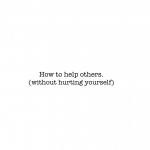
If you practice that way, service becomes something that softens you, rather than makes you hard, a place where you heal instead of one that breaks you down, instead of causing you to find ease only after your second glass of vodka in a refugee camp that is so dry that camels die.
It’s simple then, helping others. This is how you do it. You just promise not to hurt yourself, because it doesn’t make any sense, because you’ve more helping do do, you work on yourself.
If you were going to draw it on a map, it would look more like this: you start to help others, and you hurt yourself, and because ofhat equation, you hurt them too. Then you help yourself, and then you help others. Then you hurt yourself, but this time, it doesn’t stick around so long, and the space that you feel away from your centre less scary, because you know where it is, and how to get back to it, and you start to find that in the act of service, you disappear along with your questions about why, and how, and a sense of ease starts to follow you around. Things flow through you, and you are moved where you belong, like these waves of rock, cresting and falling all around us.
Thank you for listening.

